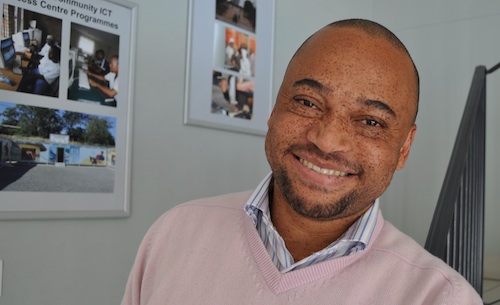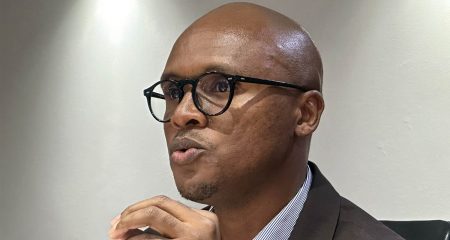
There will soon be clarity on how hundreds of millions of rand in the Universal Service Fund will be spent. The money is meant to be used to facilitate the roll-out of telecommunications infrastructure in underserviced and rural parts of SA, but has remained largely untapped for years.
Now Phineas Moleele, the newly appointed CEO at the Universal Service & Access Agency of SA (Usaasa), the government body established to administer the fund, is promising to start using more of the money.
The Universal Service Fund has as much R1bn in its coffers — and possible even more. The precise amount is the subject of discussions between the agency’s new management and national treasury, which keeps control of the purse strings, Moleele says.
Moleele, speaking exclusively to TechCentral, says efforts by government — especially those involving communications minister Siphiwe Nyanda and his director-general Mamodupi Mohlala — will result in a more co-ordinated approach to how the money is spent and how much is spent.
Until now, Usaasa has used very little of the money in the Universal Service Fund. It must justify its spending plans each year before it is given access to any of the funds.
But there’s been little co-ordination between the different spheres of government — national, provincial and local — and between central government departments over where investment needs to be directed.
Moleele, who has years of industry experience having worked at the Independent Communications Authority of SA (Icasa) in senior roles, promises that Usaasa will present a concrete roadmap detailing its spending plans by no later than October.
He says also that spending will be stepped up dramatically to support the construction of telecoms infrastructure in areas that are poorly served.
Moleele says the piecemeal approach to solving the so-called digital divide — where companies and government agencies and departments acted in silos — have contributed to problems.
Already, Nyanda has secured an increase in Usaasa’s budget. It has about R200m it can spend this financial year, up from between R40m and R60m in previous years. However, some of the new funds must be used for digital migration.
Now Moleele says he wants the private sector to work much more closely with Usaasa in its spending. Operators — both incumbent and small and medium enterprises — will be asked to work with the agency in providing services in uneconomical areas.
The agency will also participate actively in government discussions around a national broadband strategy. This strategy document, when it is produced, will help inform Usaasa of where funds should be directed, Moleele says. Those talks are expected to get off the ground in the next few weeks.
The department of communications’ recent publication of a broadband policy document is an important first step in this regard, he says. It will form the basis on which government sets out its national broadband strategy.
Telecoms operators currently contribute 0,2% of their annual revenue to the Universal Service Fund. They’ll no doubt welcome signs of life at Usaasa, which had become moribund under former CEO James Theledi and his predecessors. The agency’s board axed Theledi last year following charges of sexual harassment brought by an Usaasa employee.
Some companies have begun to express frustration privately that the fund is not being used effectively or sufficiently.
Others have raised concern that Nyanda wants to use part of the fund to subsidise digital television set-top boxes. They’re worried that money raised from telecoms companies will be used to fund broadcasting. They want to see the money reinvested in telecoms instead.
But Moleele says the set-top boxes that government wants to subsidise as the country moves from analogue to digital terrestrial broadcasting may include a “return path”, requiring telecoms links. If that happens, he suggests the operators may not have a strong case to argue. Also, it’s the minister’s legal prerogative to direct how the fund’s money should be spent, he says.
Moleele says there is already some clarity about where Usaasa will direct its spending in the next few years. He says digital television is one focus area; others include extending telecoms networks into underserviced areas using “competitive bidding processes” where licensed operators are asked to bid to provide services. The bidder that can do the work for the least subsidy from Usaasa wins the contract.
This process will be used to provide connectivity to schools, Moleele says.
There’s also an upcoming project to build community access centres. Usaasa will soon award a tender for the construction of 100 such centres across the country. — Duncan McLeod, TechCentral
- Subscribe to our free daily newsletter
- Follow us on Twitter or on Facebook




